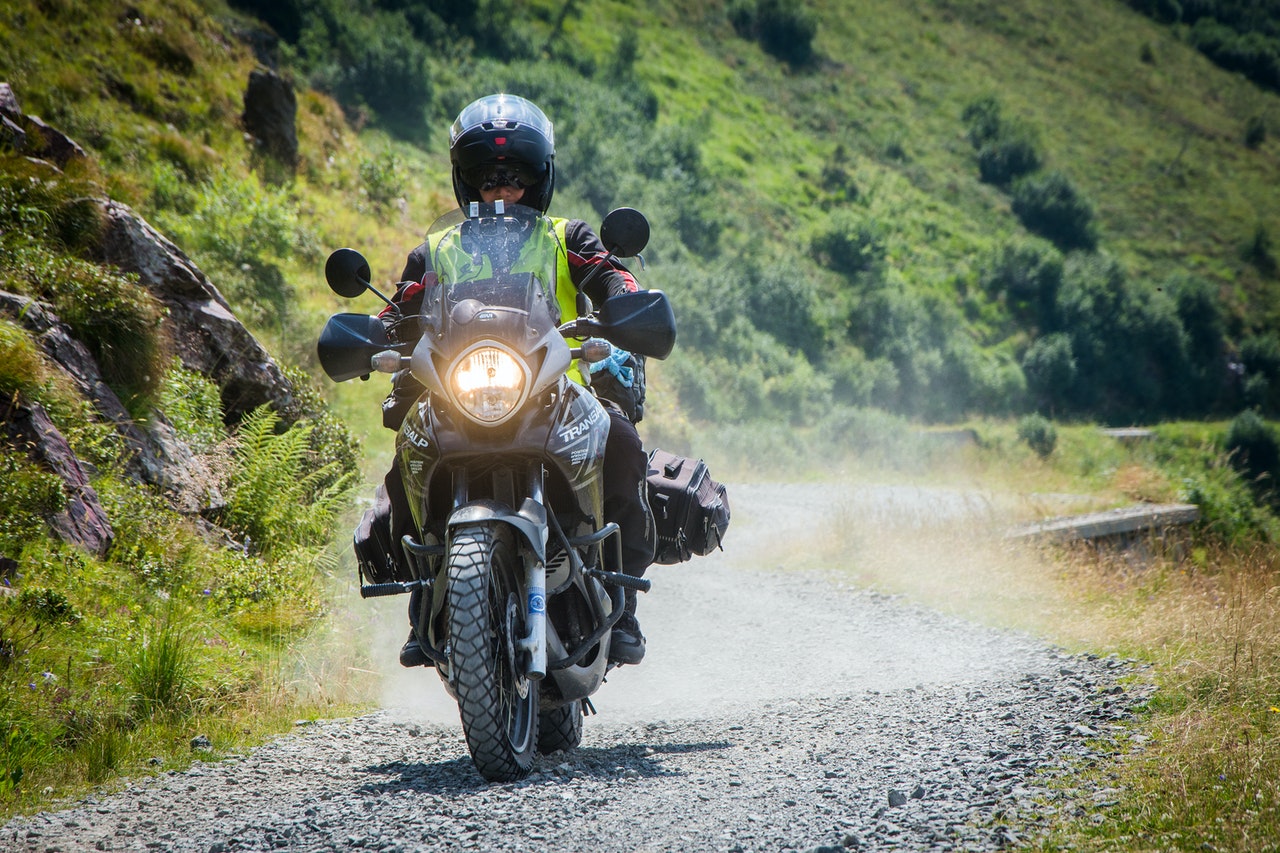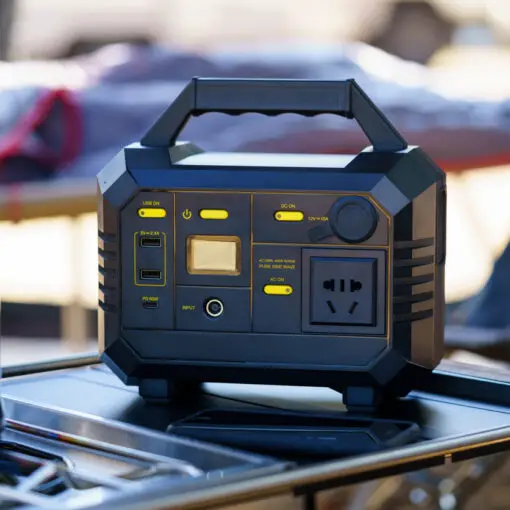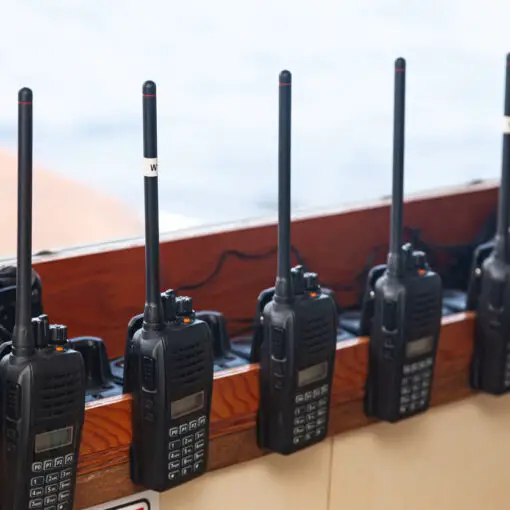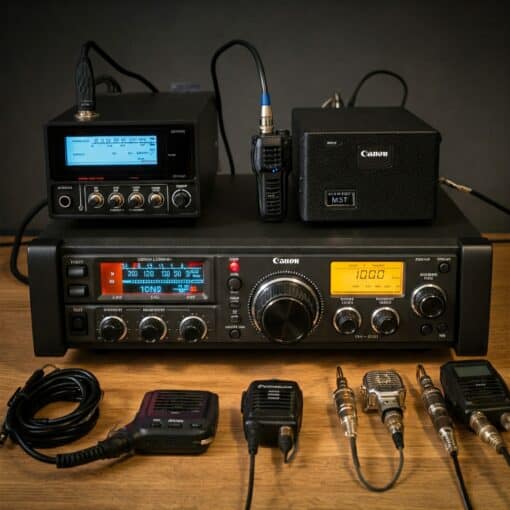If two things signify the heart and soul of freedom of expression and sociability, its motorcycles and Ham radio. Both of these things are symbological as well as physical representations of being out, under a bright, blue sky, and able to talk to someone on the other side of the planet.
Riding a motorcycle and engaging heavily in and with the Ham radio community, of which there are well over 750,000 licensed people, is an invigorating and exciting hobby to take part in.
Why Do Motorcyclists Need a Ham Radio?
Of course, it’s not as if riders are using their Ham radios while they are riding, however, like overlanding, riding a motorcycle with a Ham radio is an indication that you are going places. Cell phones are limited by where the closest cell tower is located, but Ham radio has no such limitations.
You might consider Ham radio enthusiasts to be archaic boomers, trying to embrace an old technology that people were using to communicate a hundred years ago. Why can’t they just get with the program and grab a smartphone?
The truth is, a portable Ham radio is more dependable—at least in terms of communicating with others who have a Ham radio to respond with—when you’re far from home and well beyond the range of a cell phone tower.
If you’re a licensed Ham radio operator and love to be out on two wheels, chewing your way through miles of hot blacktop, you’re going to want a solid, dependable, portable Ham radio that has the features you prefer.
Ham Portability on a Motorcycle
It comes down to what you want on your motorcycle and how you want to communicate. One issue that has to be dealt with is power, especially in terms of portability. Riding with a handheld is neither here nor there as far as the motorcycle is concerned but you are limited to how long your lithium0ion battery will last.
Some riders have elaborate setups that require an alternator that is both capable of keeping the battery topped off and generating enough juice to run your gear as well. Sometimes, that’s difficult to find.
Many hobbyists are constantly tweaking their Ham radio setup on their motorcycles while others are more limited by the type of motorcycle they own. To completely engage in the Ham community that are also riders, there are several things that you want, on top of the radio itself.
- Bluetooth option
- A good antenna
- It has to be waterproof
- Mounting options for antenna and radio
- PTT switch
- Join a community such as ADVrider
These are all the things that you need to consider, both in terms of portability and in how you are going to engage with other Ham radio operators while you are out on the open road. You can go with a regular, Ham radio handset, but you’re going to miss out on a lot.
You will have to stow the radio away on rides unless it’s waterproof and you want to hook it to your body while driving. They’re also not as effective because their power levels typically max out at 5W and you can get so much more with a mounted radio. More power equals more range.
You need to decide what you want to go with, in terms of Bluetooth unless you only want to talk once you’ve pulled over and cut the motor off. Sena offers a lot of great options for Bluetooth headsets that you can install in your helmet.
You also want a Bluetooth module so that you can track and record all of the bands that you are on at any given time and who you are communicating with and on what channel.
A Bluetooth module works with your Bluetooth headset to save important information that you would normally program as you are using your Ham. You can’t do any of that while you are riding, but the module can do it for you.
Not only do you need a great antenna, but you will also need a way to mount it on your motorcycle, as you won’t be using the one that is already there from the manufacturer. The Comet CA-2x4SRB is a great example and an exceptional antenna that you should consider.
You’ll also need to mount it with something along the lines of a Proxicast Antenna Mount. You’ll also need something to mount both the radio unit and the head. Often enough, you can stow the unit away and use a small mounting bracket for the head.
If you need the room, however, you will need to mount and install both, which is why it’s so important to purchase a waterproof Ham radio, since being on the motorcycle is obviously going to expose the radio to rain.
A PTT switch is how you are going to communicate (Push-to-Talk) and you can easily mount the switch within thumb reach on your handlebars. Once you have your setup, feel free to join a Ham radio community, especially one that is into motorcycles, with ADVriders being a prime example.
Tips for Setting up a Ham Radio on Your Motorcycle
The quickest and easiest way to set up a Ham radio on your motorcycle is to go with a handheld, portable Ham and clip it either on your body or on your handlebars. ‘
You’ll also need to run a wired headset up and into your helmet, connected to your headset. It’s a simple set up and it’s also the perfect setup for beginners. Unfortunately, it comes with some caveats.
- You have to set it up every time you go for a ride
- Lacks the power of vehicle-mounted Ham radios
- Replacement and/or battery recharge is frequent
- Lacks the range
The advantages are definitely more prevalent with a vehicle-mounted radio as you can easily integrate it with other accessories, such as an antenna, Bluetooth functionality, and headsets.
Of course, you can do all of those things with a handheld but it kind of defeats the point of owning a Ham Radio where all of your accessory equipment is mounted on the motorcycle and only reasonably useful when you are riding.
If you go with the vehicle-mounted option, there are a few things that you want to know upfront.
- The size of your unit and head
- Physical storage options
- Matching Antennas, Bluetooth module, and headset to the unit, in terms of compatibility
- You need a waterproof radio
- Compatible wires PTT
The size of your unit and head is important because you really want to install it externally, but if it is too big, that may not work out so well. So you need to go with a good size unit and head that are going to work with your motorcycle.
Oftentimes, bikers will install the head externally and the unit in a storage space on the motorcycle. If this works for you, feel free, however, it will take up some valuable storage space on your motorcycle that can be used for something else.
As with all electronic devices, not everything is universally compatible. You’ll want to do your homework on your planned setup to make sure that you can install an antenna, Bluetooth Module, Bluetooth headset, and wired PTT that will all work with your Ham radio.
You absolutely have to ensure that your setup is waterproof. If you spend the kind of money that you will spend on installing a full and elaborate system, you don’t want to lose it all because it is sprinkled outside on your way to work.
Why a Ham Radio and Not a CB for Your Motorcycle?
There’s no real reason outside of preference. Indeed, most riders go with CB, and it’s just a matter of enjoying the act of communication while they’re out riding.
Ham radio enthusiasts choose Ham radio for their motorcycles because they enjoy being a part of the Ham community, along with the large degree of experimentation that amateur radio hobbyists employ with their Ham radios.
Ham radio users are always trying to tweak their radios and get experimental with their entire setup. Nothing is different here except for the fact that the hobbyist element of Ham radio is applied to motorcycle riding. Nothing more and nothing less.
5 Best Ham Radios for Motorcycles
Instead of scrolling through endless lists of “best ham for such and such,” we compiled our list from motorcyclists themselves, pulling the highest-rated and most recommended Ham radios from the forums where bikers go to share their enthusiasm for Ham radio.
All of the radios on this list are mobile Ham radios rather than portable Ham radios. Much of that is because of the factors listed above. While portable handhelds crop up on biker forums, they are far less popular and far less efficient, in terms of consumer reviews for motorcycle Ham radios.
Since this is a list that covers the best Ham radios for motorcycles, the mobile Ham radios simply stand out in terms of features, portability on a motorcycle, reliability, and longevity. Not to mention the fact that they operate at a minimum of 4x the power of their handheld cousins.
Retevis RA25 Mini Mobile Radio
The Retevis RA25 is absolutely perfect for installation on a motorcycle, thanks to its small size and relatively large LCD. Despite its size, you can see everything that is going on because the 1.44” display is bright and the information is vividly clear.
The 8 station channel can connect directly to the base station giving you a much broader range. This was developed with farmers in mind but the application can extend well beyond just farming.
Its compression and expansion technology improves sound quality by substantially reducing environmental noise. You will have to download some additional software and purchase a programming cable separately if you want to take full advantage of its features.
It’s also not water-resistant, so you will have to purchase an additional, water-resistant cover for the head and secure the unit inside your motorcycle’s storage bin. The fact that a non-water-resistant Ham is popular amongst motorcyclists is a recommendation all on its own.
Fortunately, its 4.89 x 3.94 x 1.42-inch size means that it’s incredibly easy to install and also easy to waterproof. Even with the additional shielding, the RA25 will still easily fit into just about any installation hardware without looking ridiculous on your bike.
The GMRS mobile transceiver has a lot of range and is plenty powerful. It is a portable, mobile station, so even though it’s not a handheld, it is still supplied with lithium-ion batteries. You can either jerry-rig your power solution from the bike’s battery or recharge every few days.
It has a 9-level squelch for additional support against background noise and a 2 Tone and 5 Tone setting with 11 groups fixed code and one self-define.
| Pros | Cons |
| Perfect size for vehicle-mount Crystal clear and bright LCD Compression and expansion tech 9-level squelch Long-range GMRS mobile transceiver | Battery-powered Not water-resistant Programming cable sold separately |
Yaesu Original FTM-400DR/XDR
One thing is for sure, this is a seriously expensive Ham radio and one of the most expensive devices offered by Yaesu. However, there’s a reason behind all of that expense and that reason equates to one seriously nice, mobile Ham radio.
It comes with 50W output power and you may think that’s not enough to justify the price tag. But, there is a lot of power under the hood that is subtly masked by the output. It has APRS (Automated Packet Reporting System) functionality.
APRS communicates in real-time, digitally, in a multitude of formats—tests, GPS, information, weather alerts—and is a much-beloved feature for Ham enthusiasts, despite being a relatively new tech.
The Yaesu is also one of the best when it comes to audio. It is loud, clear, and vibrant. You won’t find a better audio experience on a mobile Ham radio anywhere. It is almost like it was designed for motorcycles.
Users report that they can hear everything in vivid detail, including complicated or words spoken in low-resonance, even when cruising down the interstate. That’s a luxury that is highly desirable for bikers.
It has a frequency range of 108 to 999MHz with extensive cross-band repeater functionality.
Although you probably won’t use the microphone that comes with it while riding, it is nice nonetheless, with the expected keypad and the ability to pick up your voice well, with little distortion.
It is a complicated machine and it comes with 5 user manuals, so you will need to spend an excessive amount of time learning the ins and outs. It’s complicated but generally user-friendly for those who know what they’re doing when it comes to programming
| Pros | Cons |
| Group Mode External GPS Input APRS High-quality sound and voice Option for an SD card Programmable on-screen buttons Frequency range of 108 to 999MHz | Very pricey No map display Complicated, w/5 user manuals |
Retevis RT73
If you thought the RA25 was small, it will look positively gigantic when stacked up against Retevis’ other offering, the RT73. It is truly a tiny radio as there are handheld versions that are larger than this thing.
It’s an outstanding device, however, and one that you can very easily mount on your motorcycle, with more than enough room around it to spare. It is a dual-band radio that is adjustable from 5W to 20W of power.
Under Direct Mode, you can place two group calls on a single channel, thanks to the dual-time slot function. This tiny little box supports 4,000 channels and can hold 300,000 contacts. If you are an incredibly enthusiastic user of Ham equipment, maybe you will reach that number at some point.
The LCD is very informative, with all of the information you need, compiled onto a single screen for easy reference. It also includes 7 function setting keys. Like the Yaesu, the RT73 APRS on-board as well, so you can relate your positioning and communications in real-time.
The APRS feature is not as wide open as the version offered by Yaesu, but you can still communicate small messages and weather with no issues.
| Pros | Cons |
| Tight and compact design APRS Stacked LCD with full information Direct Mode group talk 5W to 20W adjustable power 4,000 channels 300,000 contacts | It may be too small for some Lacks full APRS functionality |
TYT TH-9800 Quad-Band
The hands-down, best feature about the TH-9800 is the quad-band capability that comes with an exceptional price. You simply don’t find quad-band at this low of a price; at least, not very often anyway.
It has exceptional sound quality as well and is supported by plenty of 50W/40W power. The power capabilities are adjustable from as low as 5W, all the way up to 65W peak power. If you run it that high, make sure that your motorcycle alternator is up to the task as it will pull up to 15 amps when maxed out.
Since the majority of the complaints about the TH-9800 revolve around the mic distorting your voice when you hold it too close to your face, you’re in luck. On a motorcycle, you’re going to want to switch to an in-helmet set with your own boom mic.
This device also comes with CHIRP programming, which is a highly valued feature in the Ham community. This is also an incredibly durable device, a must-have to withstand the constant vibrations of the bike, and it’s been drop-tested, showing that it can withstand severe drops and mishandling.
The cross-band repeater mode is an available feature but some reports state that it can sometimes be a bit glitchy. Lastly, the TH-9800 was built to last. There is a great deal of longevity and it is one of the most highly rated radios in terms of lasting for a long time.
That means that you will get plenty of use out of this thing before you decide to hang it up for something better. It’s not overly complicated and it makes a great Ham radio for either beginners or experts.
| Pros | Cons |
| Quad-Band at a low price point Adjustable power from 5W to 65W CHIRP programming Crossband repeater High degree of durability Longevity | Mic distortion when held close to the mouth Crossband repeater is known to be occasionally glitchy |
BTECH Mobile UV-50X3
Last but not least, we have the Btech Mobile, which is another small variation of the smaller radios on this list. It’s also the only tri-band radio on here as well. The Btech has a little bit of a unique design, so you may need to get creative installing and mounting it on a motorcycle.
It has a strong and durable chassis that is definitely built to last. The LCD is bright, clear, and relays all of the standard information that your need to see at any given time. The button functions on the screen are also labeled, cutting down any confusion.
Both signal and audio are highly rated on this device, although the Ham band is limited to 222-225MHz. This could be overcome with programming, however, you run the risk of forcing the radio to overheat.
The receiver is comprised of two, Double Conversion Super Heterodyne receivers that allow for 1,000 channels total. It also comes with a crossband repeat function, where the quality is exceptional.
Of all of the radios on this list, the Btech has the largest at 5” and everything that you do on here will be easy to see, with very little confusion as to the data that you are looking at. Unfortunately, the PC05 programming cable is sold separately.
| Pros | Cons |
| Tri-band Large LCD/Easy to read Powerful, external chassis 1,000 channels Exception crossband repeat functionality | Programming cable sold separately Design may call for installation creativity Limited Ham bands |
Final Thoughts
The five mobile Ham radios on this list are exceptional devices and highly lauded within the biker and Ham communities. While you may need to get creative with some and waterproof others, you will get an outstanding Ham radio for your over-the-road applications, no matter which one you decide to go with.










